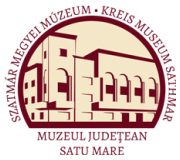Szőcs Péter Levente (szerk.): Sanislău. Ghid cultural şi istoric (Satu Mare, 2010)
Archaeological Vestiges
archaeological rescue research demonstrated that a cremation necropolis (cemetery) functioned at this site. The funerary urns and the vessels put next to them, were decorated with grooves. This ceramic objects were made with oxidizing fire, getting red colour, or bright black on one side and red on the other one. Traces of a settlement belonging to this civilization were discovered near the necropolis. At the La Hârburi site, pottery fragments belonging to the Gáva Culture were discovered, too. These discoveries prove the existence of a second settlement on this site. The lack of archaeological research in the second settlement, make impossible for us to know for sure whether the settlement located at La Hârburi was contemporary or subsequent to that located at Resighea-Livadă (Orchard). The bronze axe discovered in the garden of Leontin Seiche, entered the collection of Sanislău School, and it dates probably to this period. The most famous archaeological discovery made within the limits of Sanislău Commune is the Late Iron Age necropolis (cemetery) on the dune of the Nisipărie. The local history teacher, V. Merényi, discovered a cremation grave on this dune, located at the western part of the locality, toward Horea village. The systematic and rescue excavations per-Ceşti cu toartă supraînălţată din sec. V-IV. î. Hr. Magasított fülű csuprok a Kr. e. 5-4. századból Cups with high swinging handle, 5th-4lh centuries B. C. 9
